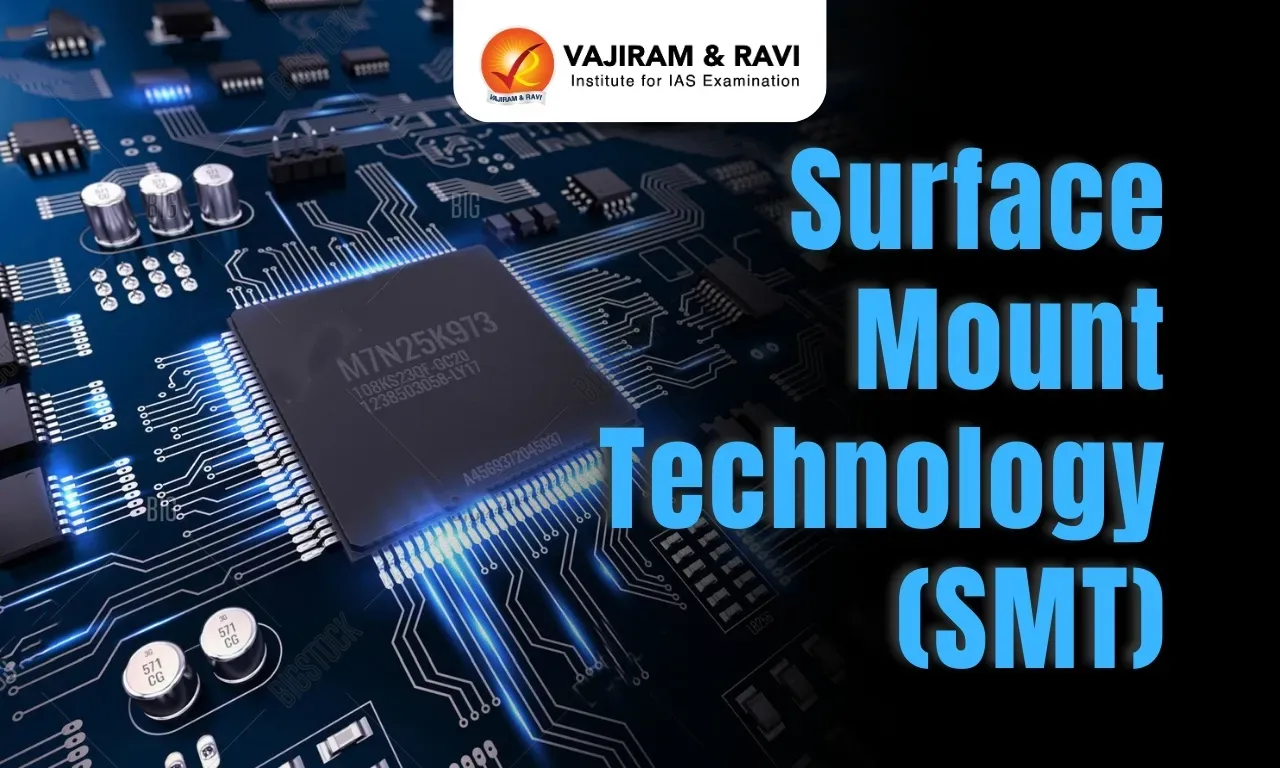Surface Mount Technology (SMT)
19-04-2025
07:01 AM

Surface Mount Technology Latest News
Inaugurating VVDN Technologies' SMT (Surface Mount Technology) Line at Manesar recently, the Minister of Electronics and Information Technology noted that electronics manufacturing in India has risen 5-fold in the last decade, topping Rs 11 lakh crore.

About Surface Mount Technology
- It refers to a manufacturing technique where electronic components are directly applied to the surface of a printed circuit board (PCB).
- SMT, developed in the 1960s and 1970s, replaced conventional through-hole technology (THT), producing more compact, economical, and efficient electronic devices.
- This method enables automated production to conduct a more extensive assembly, resulting in the creation of a fully functional circuit board.
- Any electronic element installed in this manner is identified as a surface-mounted component (SMD).
- In opposition to conventional manufacturing techniques, SMT removes the necessity for elements to be placed through apertures; rather, elements are attached to the board via the process of soldering.
- The two main soldering techniques are reflow soldering and wave soldering.
- Assembling PCBs using SMT involves various steps like solder paste application,component placement, reflow soldering, and cleaning.
- SMT is used in many industries like consumer electronics, medical, and aerospace industries.
- THT vs. SMT:
- As compared to THT, SMT has cheaper production costs, increased component density, and superior electrical performance. But the initial cost is high, and it is difficult to repair.
- The process for SMT production setup is faster when compared to THT. This is because components are mounted using solder paste instead of drilled holes. It saves time and labor-intensive work.
- SMT supports microelectronics by allowing more components to be placed closer together on the board. This leads to designs that are more lightweight and compact.
- Simplicity: In THT, lead wires pass through the holes to connect components. Because SMT components are soldered right onto the PCB, the overall makeup is far less complex.
- The heat dissipated in SMT is also less than through-hole components.
Surface Mount Technology FAQs
Q1. What is surface mount technology?
Ans. It is a method used in electronics for mounting components directly onto the surface of a printed circuit board (PCB).
Q2. Which of the following is a main soldering technique used in surface mount technology?
Ans. Reflow soldering
Q3. What is a key advantage of Surface Mount Technology (SMT) over through-hole technology (THT)?
Ans. As compared to THT, SMT has cheaper production costs, increased component density, and superior electrical performance.
Source: ET
